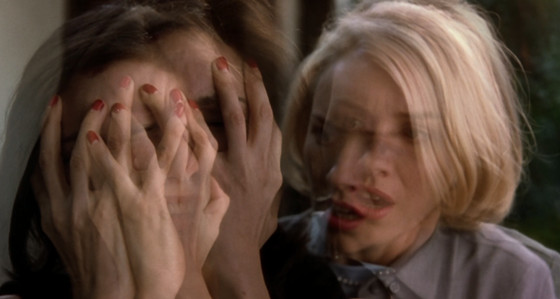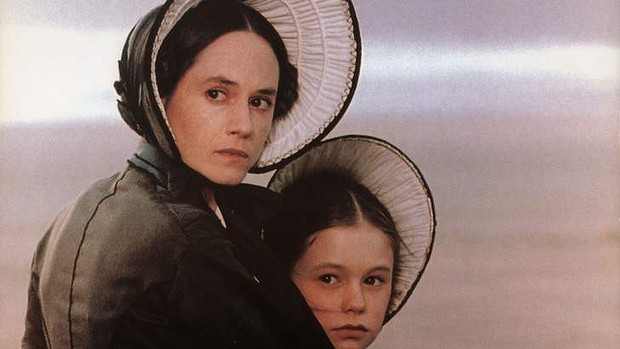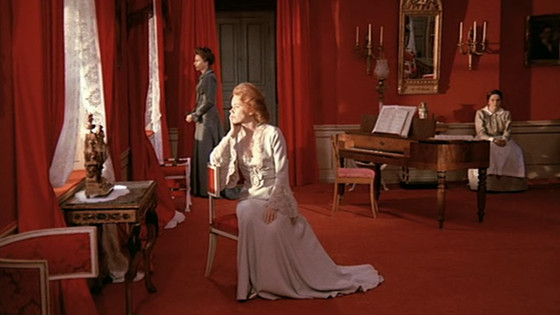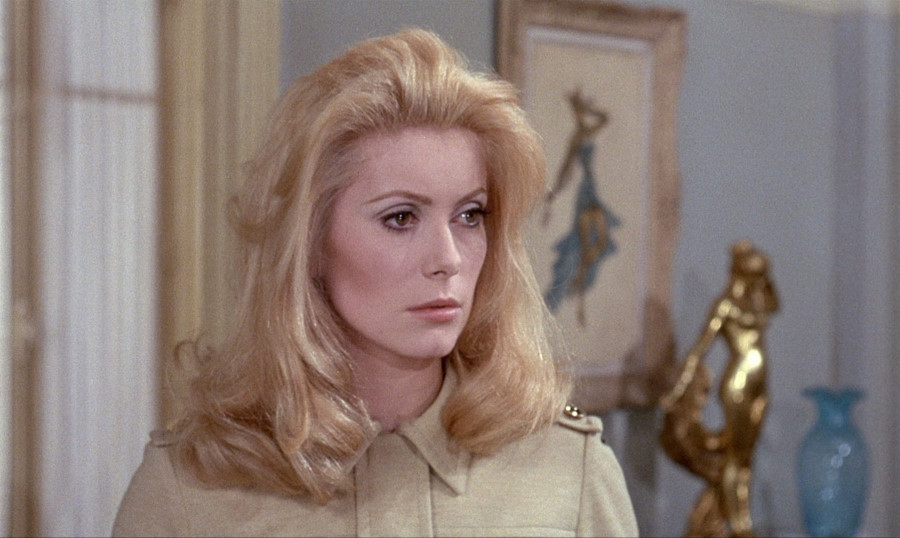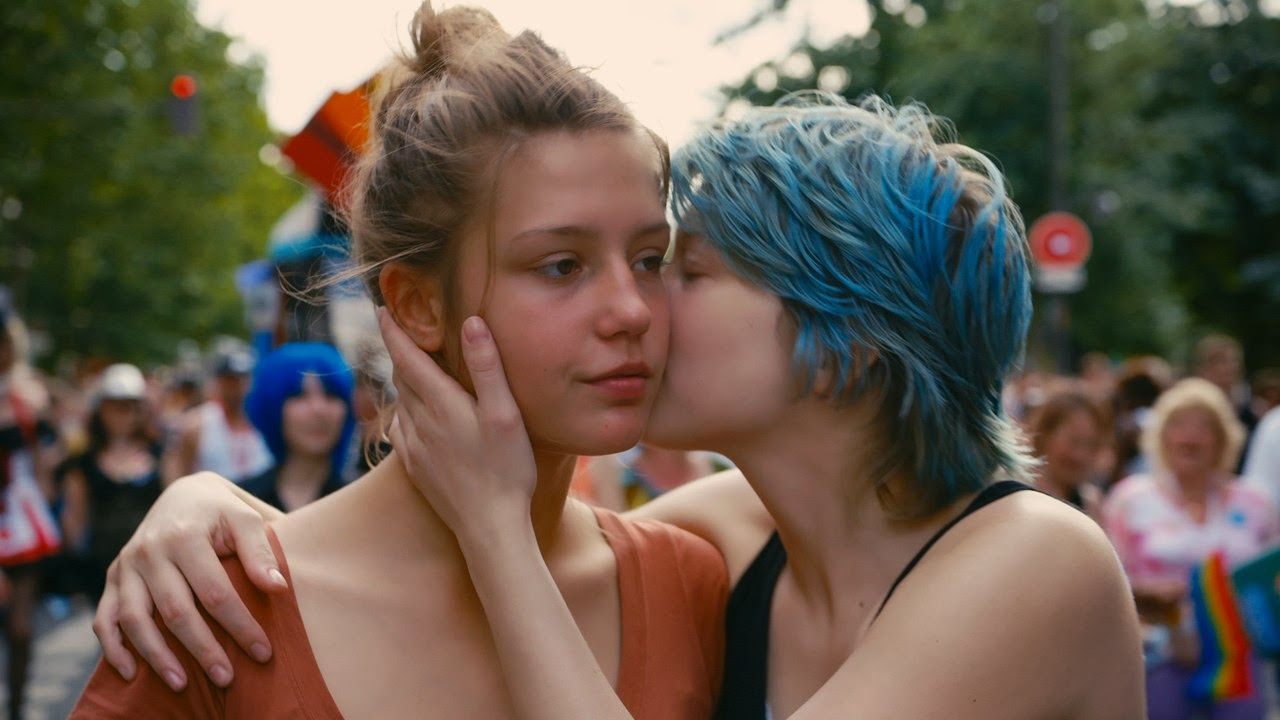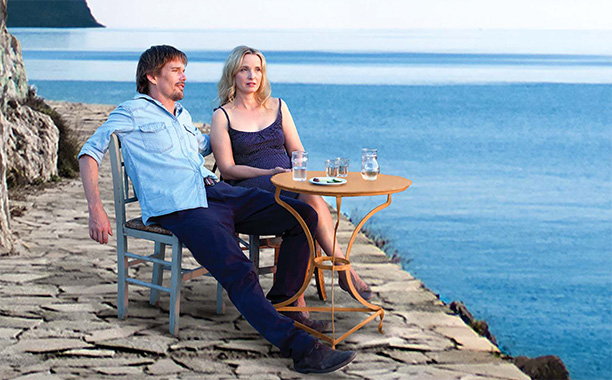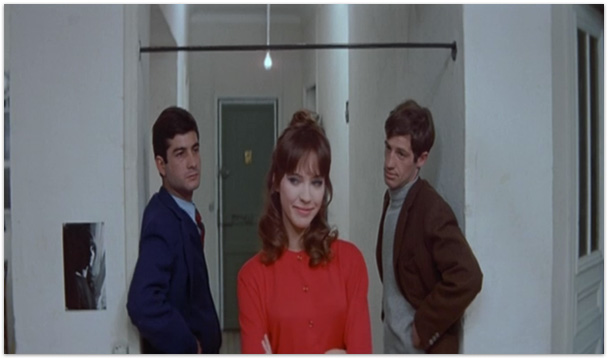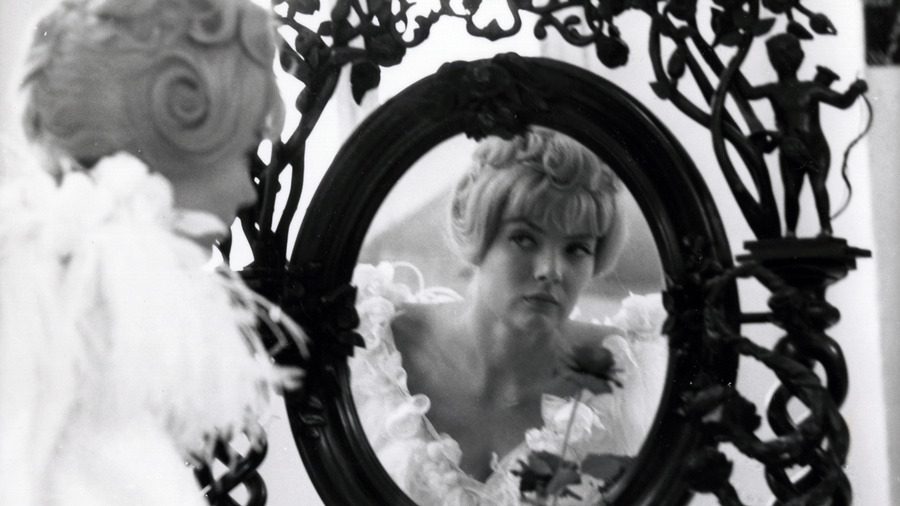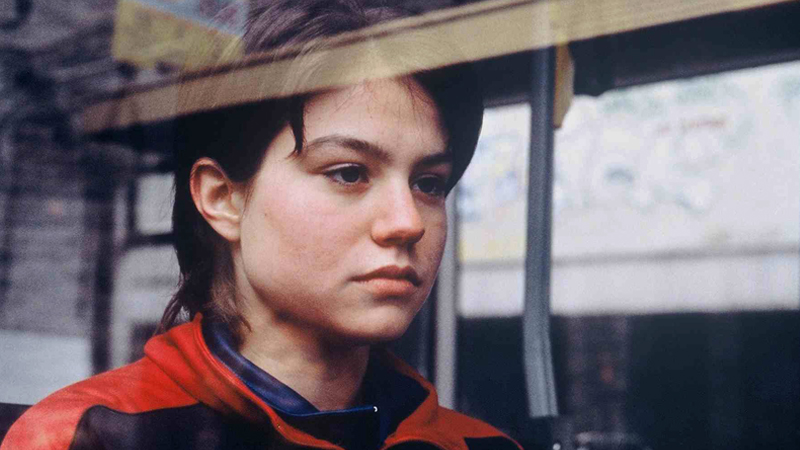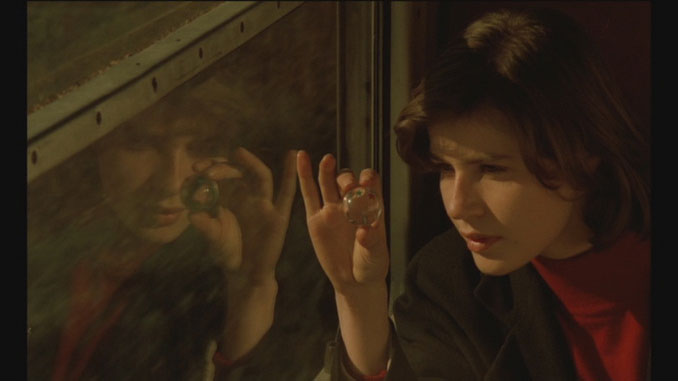11. Mulholland Drive (David Lynch, 2001)
Mulholland Drive tells the story of an aspiring actress called Betty, played by Naomi Watts, and an amnesiac woman (Laura Harring), as they both try to solve the lost woman’s identity mystery. It also chronicles the episodes of a movie director caught on a conspiracy, a sloppy hitman and a very scary bum behind a diner. By the third part of the film the tone shifts dramatically, as it is presumingly discovered that the action happened on a depressed woman’s dream, also played by Watts. Trying to make the guilt and panic go away, she fantasises about an alternative story for her life, punishing the people who contributed to her decadence and owning the one she madly loves.
This neo-noir masterpiece is one of cinema’s greatest magic tricks. One is invited to enter the lead characters’ mind by following her dream and, in that way, understand why she behaves in certain ways or how the past influenced the person she now is – in a way that only David Lynch could think of. Naomi Watts impresses in her breakout role, adding extra dimension to a very hard role to play.
12. The Piano (Jane Campion, 1993)
When looking through New Zealander director Jane Campion’s career, it’s obvious that the director has a preference for telling stories about complex women. Her directional debut Sweetie, the Nicole Kidman’s period piece The Portrait of a Lady and, more recently, the BBC miniseries Top Of The Lake all show the tendency for a female driven narrative. However it’s her 1993 movie starring Holly Hunter that made Campion such an important director.
The Piano tells the story of Ada, a mute woman who is sold to a New Zealand frontiersman named Alisdair, bringing her young daughter with her. When her now husband refuses to take Ada’s piano to their house, leaving it on the beach, an unmannered man buys it without Ada’s contentment. Raged by the the husband decision, she starts giving piano lessons to the man which involve into a cynical and sexual game.
Loosely based on The Story Of A New Zealand River, the film depicts the life of a lost woman, and the compromises she has to do in order to be close to the thing she most loves, in a truly sensible and delicate style. The movie won three Academy Awards for three females, Campion won for best screenplay, Hunter for lead actress and Anna Paquin for supporting actress.
13. Cries and Whispers (Ingmar Bergman, 1972)
In late ninetieth-century Sweden, two sisters revive memories from their life at their other sister’s mansion, who lives her final days, eventually passing away with cancer. Although the two sisters returned to the house to be close to their relative, it’s the religious maid who comforts the dying woman, since present situation brings unsettling thoughts to the two siblings. On the film’s climax the characters are ultimately confronted by death, when their late sister comes back to live to ask for love, one last time, and we finally see the true colours of each women.
Cries and Whispers is one of the director’s more effortless films, combining the existential problems, like burden of life or the inescapability of death, regularly dealt with in his work, with the stunning visuals, using the colour red to represent the character’s fears, resentments, anxieties and desires. As Bergman said: “All of my films can be thought of in terms of black and white, except Cries and Whispers”, which is a very valid reasoning in the sense that it would lose its impact if shot in black and white.
14. Belle De Jour (Luis Buñuel, 1967)
Unable to control her torrid sexual fantasies, Séverine, a virginal bourgeois newly-wed, decides to work at a brothel in the afternoon under the fake name of “Belle De Jour”. In the thick of her double life, a young outlaw threatens to end Séverine’s peace as he becomes gradually obsessed with her. The line between what is real and what is imagination is hard to distinguish, so the person who watches the film is left to decide if the main character’s adventures happened or are a figment of her imagination.
At first one can think Belle De Jour is nothing more than a preposterous male fantasy, however, as the layers of symbolism are peeled, it turns out to be something way more complex. Taking a closer look at the director’s approach to the scenes we never see Deneuve naked, instead Buñuel focuses more on the character’s clothes, and sex is never shown on camera, although most of the film is passed on a brothel, which indicates the lack of concern for the objectification of the lead character and more for the troubles and illusions inside her head.
15. Blue Is The Warmest Colour (Abdellatif Kechiche, 2013)
The most recent entry on this list won the Palme D’Or, not only for the director, but also for the two female leads, who became the first actors to ever be distinguish with such an honour. This 2013 french film was one of the buzziest pictures of the year for its numerous scandals, but also for the way it takes the coming-of-age story to a whole new level.
Blue revolves around Adèle (Adèle Exarchopoulos), a shy teenage girl who is pressured to date a boy, but soon starts obsessing with a blue haired young woman (Léa Seydoux), who she sees one day, and ultimately pursues a relationship with. In the span of three hours, Adéle is developed from her innocent school years to her more mature time, with her girlfriend, working as a primary teacher.
As the audience follows the day to day episodes of Adèle’s life (eating, sleeping, having sex, dancing, tying her hair), they ultimately connect to this very real human being. At times it’s like there’s no movie at all and she’s just another person crossing the street and it’s all due to Kechiche’s raw direction and the actresses’ fearless performances.
16. Before Sunrise/ Before Sunset/ Before Midnight (Richard Linklater, 1995, 2004, 2013)
Audiences met Celine (Julie Delpy) and Jesse (Ethan Hawke) on a warm evening, at Vienna, and little did they know this unexpected encounter would result in one of the most beautiful and enduring love stories of cinema. In Before Sunset they are young adults talking about love, insecurities and trying to understand a bit better the world they live in.
Nine years later, Before Sunset comes out and, now in Paris, they both reencounter answering the questions left in the air at the end of the first instalment and realising their love for each other was something more than a one night affair. After another nine year period, we meet them again, in 2013, as a couple with kids vacationing in Greece and having severe marital issues.
Although it’s great to see Delpy in the peak of her beauty in Sunrise and more in control of herself in Sunset, it’s in Midnight that we see the actress fully embracing Celine, understanding every aspect of her personality and the reason she acts in certain ways. The hotel room scene in Before Midnight, where the two lead characters have an argument about the state of their relationship, their family and their life, is enough reason to let this character feature in this list. One might not sympathise with Celine all the time but it’s unmistakable that she is a very authentic woman.
17. A Woman Is A Woman (Jean Luc Godard, 1961)
“Angela, tu es infâme.
No – she says – je ne suis infâme. Je suis UNE femme”
The last line of dialogue pretty much sums up the whole film. It’s a loud and clear message, Angela is a woman and is unapologetic about it. Anna Karina, in her acting debut, plays the free-spirited Angela, an exotic dancer with a very specific goal – to have a child. The ambition isn’t shared by her boyfriend, who suggests she should sleep with his best friend, who has a crush on her.
Godard described the picture as a “neorealist musical—that is, a contradiction in terms” and there are plenty of examples to prove that, like being an homage to Hollywood’s musical comedies yet featuring one single musical number, the musical cues which never lead to musical movement or the political ideals disguised by the lightness of the subject. The constant conflict reflects the woman’s complex nature and the director took part of that to create the life of a very singular woman, that could have only been played by Karina.
18. Cleo From 5 To 7 (Agnès Varda, 1962)
The spoiled Singer Cléo impatiently awaits for the medical result of a test from her doctor, fearing they might indicate stomach cancer. In that period of time she meets different people and reflects on her existence, death and the place she has on other people’s lives. Eventually she comes to the conclusion that she might not be that important for her dear ones in the moment she encounters a soldier who is going to the war in Algeria the next day.
Agnés Varda’s French new-wave masterpiece, described as a mix of vivid vérité and melodrama, is a great example of the sixties society and the female emancipation happening at the time. The camera chronicles Cléo’s inner journey through a couple of hours in her life, marking her evolution from a self-absorbed individual to having a wider understanding of the world around her.
Varda’s feminist and political messages were groundbreaking for the era, allowing more films to experiment with the same topics. The director later shot Vagabond (1985), another brilliant film depicting the same social issues featured here in a totally different backdrop.
19. Rosetta (Jean-Pierre & Luc Dardenne, 1999)
After her probationary employment ends, Rosetta looks for a new job in order to save herself and her alcoholic mother from their degrading life on a trailer park. When a young man falls for her charm, he offers her a job opportunity selling waffles but, unimpressed by his generosity, she denounces his illegalities to their boss resulting on his firing and her promotion. Unable to displace guilt and dissatisfaction, her destiny unravels in an unpredictable way.
At some point in the film the titular character says: “My name is Rosetta. I found a job. I’ve got a friend. I have a normal life. I won’t fall in a rut. Good night.” These simple affirmations reinforce her struggle to accept her life the way it is and allude herself with the little she has.
There are rare examples of characters with as much strength as Rosetta, let alone teenagers with as much to say as her. She later became more than fiction when her impact resulted in a Belgium law that prohibits employers from paying teen workers less than the minimum wage and other labor reforms for youth.
20. The Double Life Of Véronique (Krzysztof Kieślowski, 1991)
Irène Jacob plays two characters with a similar name, a similar appearance, a similar personality but living in different countries and experiencing different lives. The film first focuses on Weronika, a free-spirited Polish choir soprano, and later on Véronique, a serene French music teacher. Though the two young women only cross paths once, they share an emotional bond that goes beyond the explainable.
Kieślowski defined the film’s subject matter as “The realm of superstitions, fortune-telling, presentiments, intuition, dreams, all this is the inner life of a human being, and all this is the hardest thing to film.” The director’s main concern isn’t for the audience to understand the film in its totality but to feel each sight and sound in a profound way.
The Double Life Of Véronique is, visually and intellectually, one of the most beautiful experiences to have inside a movie theatre. No movie has ever dealt with the mysteries of the world and of women in the way Kieślowski was able to do here.
Author Bio: João Miguel is a Portuguese film student. After seeing 8 1/2’s final scene and Persona’s mirror moment he knew there was a grand mystery about this thing they call cinema.
